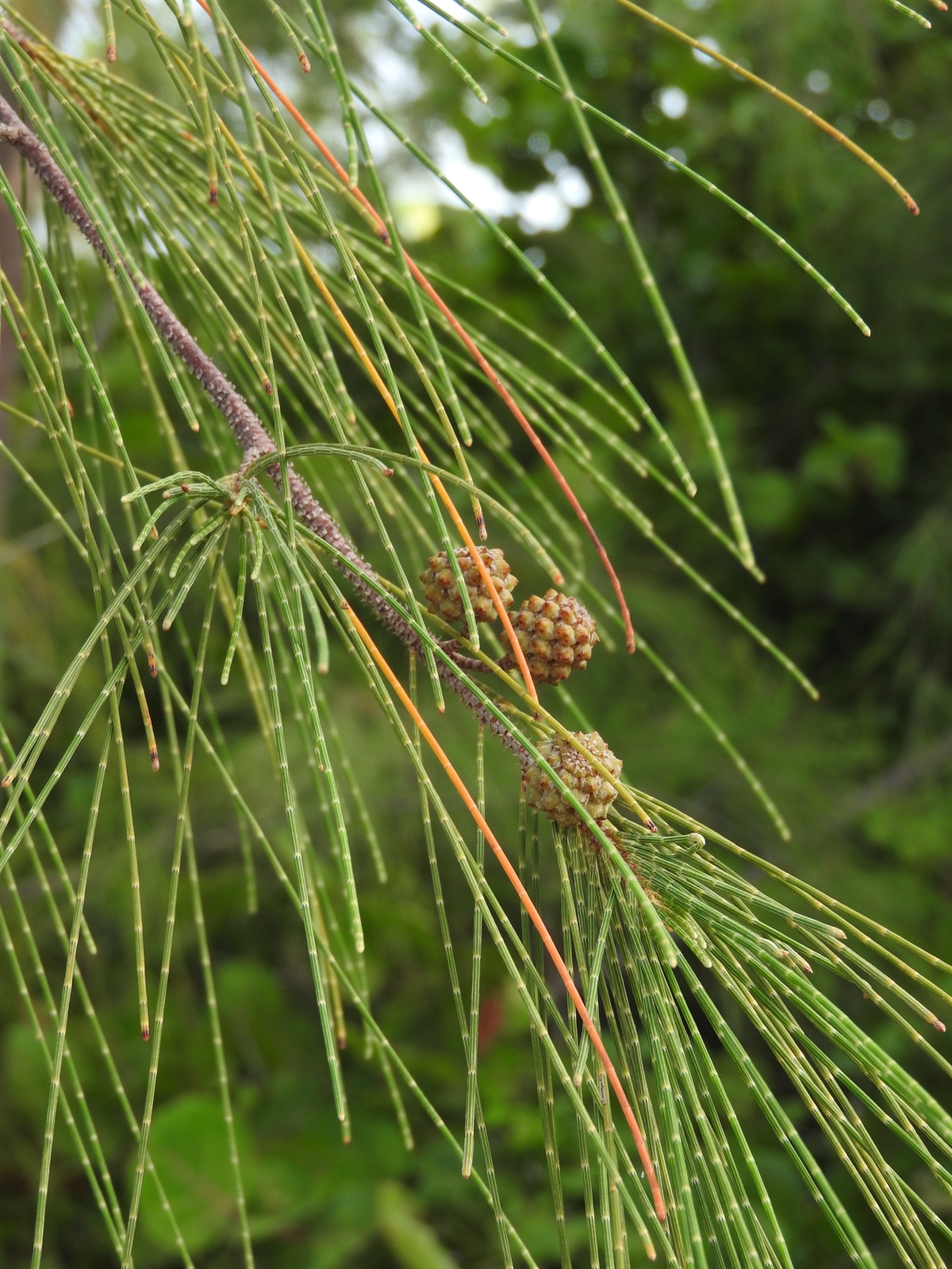Habit: Casuarina equisetifolia grows as a large tree to 25 meters in height and 1 meters in diameter, with peeling, gray brown bark. The branches are modified as phylloclades forming needle like structures. At the nodes the leaves are reduced to triangular scale like appendages.
The incomplete, imperfect, actinomorphic, highly reduced flowers are arranged in terminal staminate spikes and carpellate cones. Staminate flowers have bract like 2 sepals and 2 bract like petals in the perianth and 1 stamen and no carpel. The carpellate flowers have 2 bracts and 1 carpel with 1 ovule. The fruit is an aggregate of woody capsules forming a dry cone with each ovary splitting along 2 suture lines.
Habitat: Casuarina equisetifolia grows in Human Altered environments including yards, roadsides and cleared fields as well as along shorelines Dunes, Rocky Shores and coastal Dry Broadleaf Evergreen Formation – Palm Woodlands.
Distribution: Casuarina equisetifolia is native to Australia but now grows as a Non-Native Invasive throughout the Lucayan Archipelago as well as tropical and subtropical regions of the world.
Medicinal/Cultural/Economic usage: Casuarina equisetifolia is used in the Lucayan Archipelago to treat pain, circulatory problems, and in strengthening and aphrodisiac teas.
* Casuarina equisetifolia is a HIGHLY AGGRESSIVE NON-NATIVE INVASIVE that should always be removed and destroyed. It reduces overall biodiversity, is responsible for coastal erosion, and prevents sea turtles from nesting.
